Transforming Detroit and all of Michigan Golf Courses with Artificial Turf
Golf has long been known as a sport that requires precision and skill, played on immaculately manicured greens. However, the typical methods of managing golf courses come with their fair share of challenges, such as high water consumption, extensive and time-consuming maintenance requirements, and sensitivity to weather conditions. In recent years, there has been a radical shift in the industry with the introduction of artificial turf, and Southwest Greens of Michigan has emerged as a pioneer in this realm. In this blog, we’ll dive into the innovation behind artificial turf, exploring how it changes golf courses and why Southwest Greens is at the vanguard of this groundbreaking approach.
THE HISTORY OF ARTIFICIAL GRASS
Artificial turf technology has come a long way since its first installations in the 1960s. Early versions were harshly criticized for their less than natural appearance and unsatisfactory performance. However, advancements in technology and materials have transformed artificial turf into a state-of-the-art, beautiful alternative to natural grass. Southwest Greens has worked hard to push the boundaries of technology that closely mimic the appearance, feel, and playability of organic grass.
WHAT MAKES TODAY’S SYNTHETIC TURF BETTER?
One of the critical aspects of Southwest Greens' artificial turf that helps it stand out from the rest is its composition. It consists of a multi-layered system made to mimic the characteristics of natural turf. The top layer, also called the infill, is a mixture of fine materials such as silica, depending on the application. This layer provides stability, padding, and traction, enabling golfers to achieve consistent bounce, aim, and roll (B.A.R.).
Unerneath the infill lies a backing material that increases durability, ensuring proper drainage. Southwest Greens' proprietary backing technology is crafted to stand up to heavy foot traffic and resist premature wear, making it suitable for Detroit and all of Michigan golf courses that experience frequent use.
THE SCIENCE OF ARTIFICIAL TURF
The science that goes into Southwest Greens' artificial turf goes far-past its composition. A critical aspect of its design is the integration of cutting-edge fibers that simulate the properties of authentic grass blades. These fibers are meticulously engineered to provide an authentic appearance and optimal playing conditions. They are usually made from polyethylene, which offer wonderful durability and strength. Southwest Greens leverages extensive research and development to make sure that its artificial turf products deliver consistent performance, even under rigorous usage.
WHY ARTIFICIAL TURF INSTEAD OF NATURAL GRASS?
One of the primary advantages of synthetic turf over natural grass is its minimal maintenance requirements. Maintaining a natural golf course can be quite labor-intensive and expensive. Natural grass demands regular watering, regular mowing, fertilizing, and pest control.
Alternatively, our artificial turf eliminates the need for these tasks. It’s built to survive fluctuating weather conditions, including severe heat and heavy rainfall, without losing its structural integrity or playability. This resilience makes it a cost-effective and sustainable alternative for Detroit and all of Michigan golf courses, as it requires minimal water usage and reduces the need for harsh chemicals.
Southwest Greens' artificial turf provides a level of consistency that’s hard to get with natural grass. Golfers regularly struggle with uneven playing surfaces, erratic ball rolls, and divots caused by footsteps. With artificial turf, these issues are mitigated, providing golfers with a reliable and predictable playing experience. The advanced infill systems used by Southwest Greens ensure that the ball rolls smoothly and consistently, letting players focus on their technique and strategy.
WHAT ABOUT THE ENVIRONMENTAL EFFECTS OF ARTIFICIAL GRASS?
Beyond its performance benefits, artificial turf can also add to environmental sustainability. Water scarcity is a serious issue in numerous regions, and golf courses are regularly criticized for their high water consumption. By choosing artificial turf, Detroit and all of Michigan golf course operators can significantly reduce their water usage, alleviating the strain on local water supplies.
The absence of harmful fertilizers and pesticides needed for natural grass maintenance helps cut down on water pollution and soil contamination. Southwest Greens commitment to sustainability is evident in its commitment to making eco-friendly turf products that align with these principles.
THE DREAM TEAM OF SOUTHWEST GREENS
Southwest Greens’ expertise extends beyond the science of artificial turf. Our team of pros, including installers, designers, and engineers, deeply understand golf course planning and construction. They collaborate closely with golf course owners and operators to develop unique solutions to meet their specific needs and requirements. Whether it's designing a challenging artificial putting green or constructing an entire golf course, Southwest Greens combines scientific knowledge with practical expertise to deliver exceptional results.
